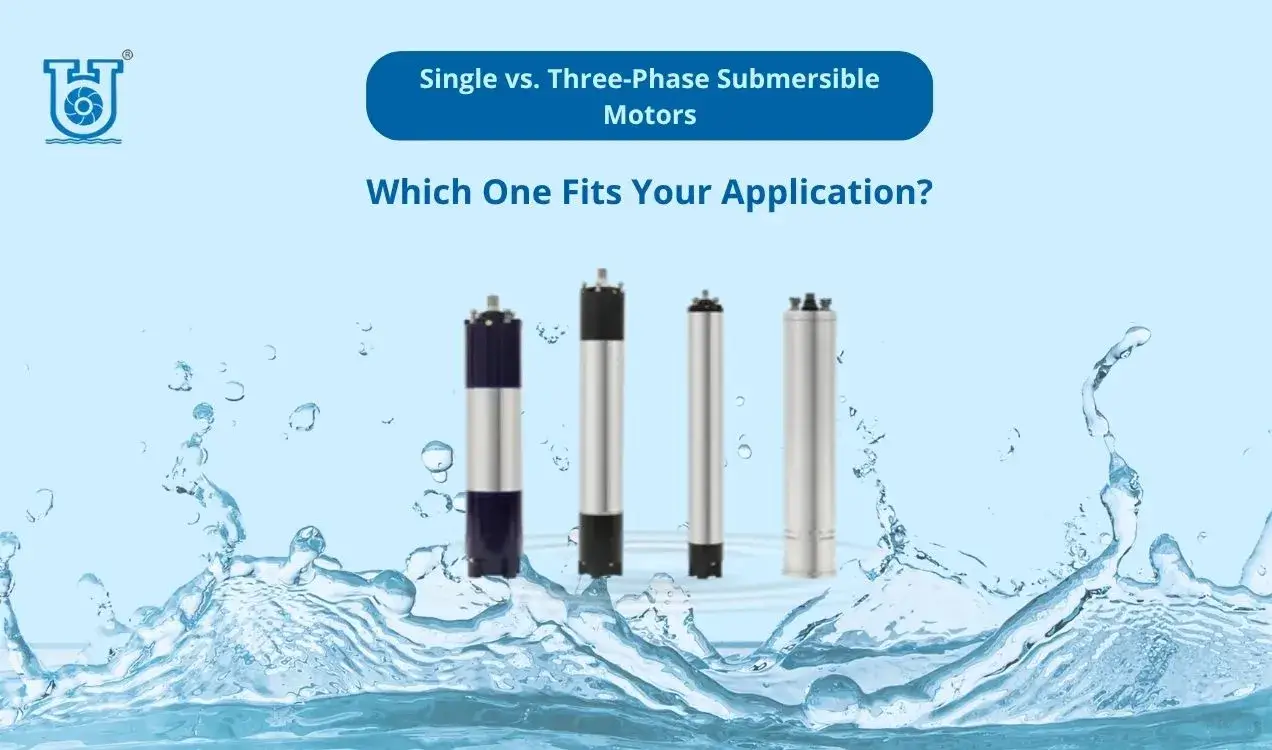Making the right choice of submersible motor is critical to the success and efficiency of the pumping system. Submersible motors are motors used to drive pumps that are submerged in water, such as in a well, water tank, or borehole.
One of the major decisions to make is whether to use a single-phase or three-phase submersible motor. Both single-phase and three-phase submersible motors are designed for certain applications and have their own advantages.
What is a Submersible Motor?
A submersible motor is an electric motor designed to work submerged in water. It is sealed to ensure no water penetrates the motor and causes damage to the motor components.
Submersible motors are designed to connect to pumps and be used for:
- Extracting water from a well or borehole
- Pumping water in agricultural activities
- Supplying water to homes or buildings
- Pumping and moving waste water or sewage
What Is the Difference Between Single Phase and Three Phase?
While the basic principles of electricity are the same, there is one difference in the electricity used.
Single Phase:
- Uses one alternating current (AC)
- Used in the majority of homes and small businesses
- Can run off 110V or 220V
- Has two wires (one live or hot wire, and one neutral)
Three Phase:
- Uses three alternating currents, which are each out of phase with the others
- Usually found in factories, farms, and very large buildings
- Can run off 380V to 440V
- Has four wires (three live, and one neutral)
Advantages of Single-Phase Submersible Motors
Single-phase motors are perfect for small and medium-sized jobs.
Let’s take a look at some of their advantages:
1. Simple and Easy to Use
- They are easier to install and operate
- Each motor has no complex wiring and does not need special tools
2. Good for Low Power Needs
- They are perfect for homes, small farms, or small gardens
- Works well with pumps requiring 1 HP to 3 HP (horsepower)
3. Easy to Get
- As single-phase power is used in the majority of homes, the motors are generally easy to obtain and affordable
4. Lower Initial Cost
- Single-phase motors are generally less expensive to purchase
- They are great for a limited budget
Disadvantages of Single-Phase Submersible Motors
- Less efficiency: These motors are less efficient than three-phase motors
- Limited power output: No heavy-duty jobs
- Increased maintenance: The starting device (capacitor) will wear out over time
Benefits of Three-Phase Submersible Motors
Three-phase motors are used for larger, more powerful systems, and they offer several advantages over other types of motors.
These include the following:
1. High Efficiency
- These motors can convert energy to work more efficiently
- They provide more work with less electricity expense
2. Can Handle Heavy Loads
- Great for deep wells, large irrigation systems for sale, or industrial uses
- These motors will power motors over 5 HP with ease
3. Longer Life
- These motors contain fewer moving parts; therefore, they have a longer life expectancy
- Less heat is produced which can produce a wear and tear factor
4. Less Maintenance
- There are no capacitors or a special start device
- There is a reduced risk of mechanical failure
Disadvantages of Three-Phase Submersible Motors
- Higher initial costs: These motors cost more for the initial purchase
- Needs a three-phase power supply: Not all sites have three-phase electricity available
- More complex wiring: More details during installation because three-phase wiring may be more complex than other wiring projects and needs a qualified person
How to Choose the Right One for Your Needs
When purchasing an electric motor, whether single phase or 3 phase, it is a matter of the type of work, power supply, and budget.
Here are some important points to consider:
1. Find Out What Power Supply is Available at Your Location
- If your location only has single-phase electric service, you can only use a single-phase motor
- If you have the option of using three-phase electric service, you have more choices
2. How Deep is Your Water Source?
- A single-phase motor will work well for shallow wells (less than 50 meters)
- For deep bore wells or heavy pumping, a three-phase motor should be used
3. How Much Water Do You Need?
- A single-phase motor will work just fine for home or small garden use
- If you’re using it for large farms, construction sites, factories, etc, a three-phase motor is your choice
4. Budget
- A single-phase motor will cost less, and installation will cost less
- If you’re looking at long-term savings and performance, a three-phase motor will give you more value in the end
Common Mistakes to Avoid
- The use of a single-phase motor for heavy work may cause motor failure
- A three-phase motor will not operate correctly with a single-phase connection
- When purchasing a motor, you should always check water depth, voltage, and water requirements
Overloading the Motor
Using a Three-Phase Motor Without Supply
Ignoring Local Conditions
Conclusion
In conclusion, the choice between single-phase and three-phase submersible motors ultimately depends on the scale and demands of your application. Single-phase motors are well-suited for smaller, residential setups where ease of installation and cost-efficiency are key priorities.
However, for larger, more demanding applications requiring higher power and efficiency, three-phase motors are the better choice. They offer greater performance, longevity, and reliability, making them ideal for industrial and commercial uses. Careful consideration of your power supply, performance needs, and budget will guide you toward the best motor type for your specific requirements.


